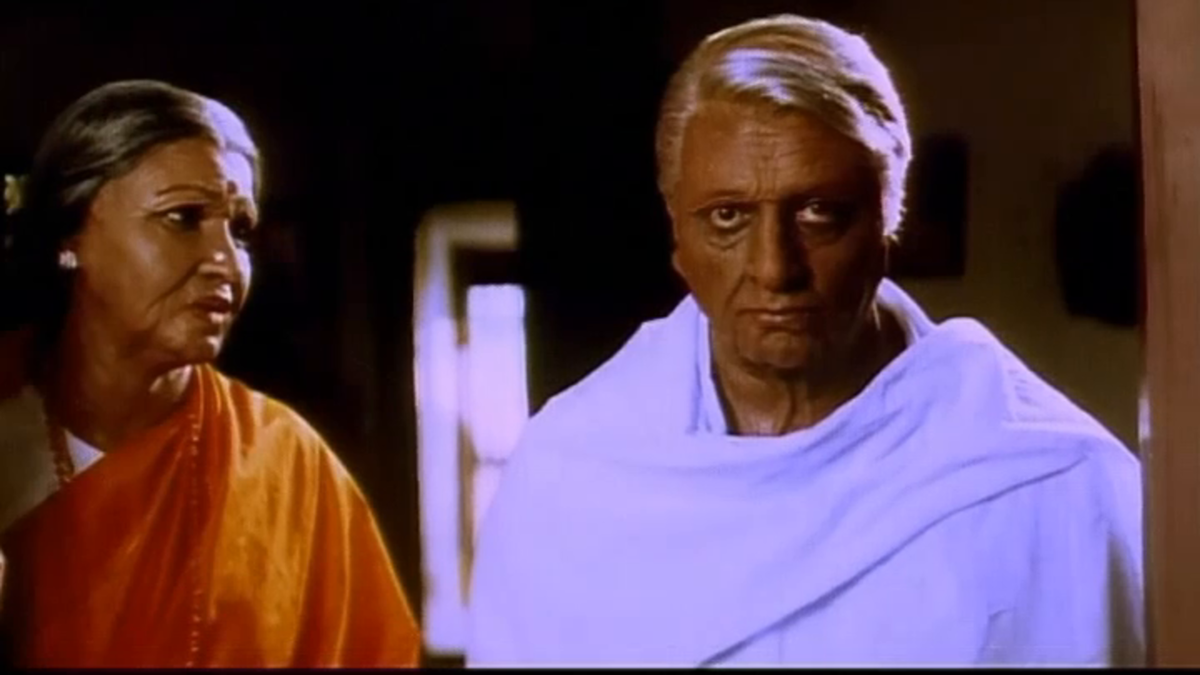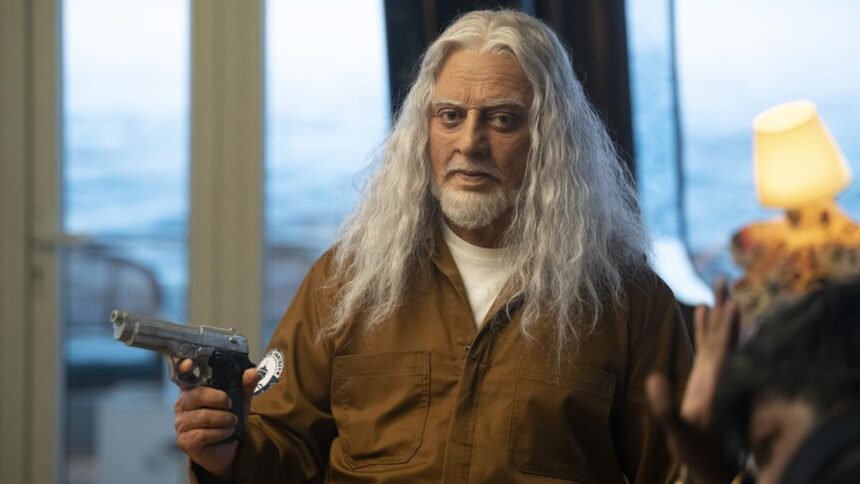The humongous success of the 1996 Tamil blockbuster, Indian, starring Kamal Haasan and directed by Shankar, could be attributed to a number of reasons, such as Kamal Haasan’s brilliant portrayal of a 70-year-old freedom fighter, exquisite numbers from AR Rahman and Shankar’s imaginative story-telling, but the primary reason was its instant appeal to the ‘common man’, forced to shell out money to government officials on an everyday basis.
The impact of Gentleman, Indian and subsequently several of director Shankar’s films such as Mudhalvan and Anniyan spoke to generations of Tamil people, shaping their understanding of politics and corruption in the society, often privileging problematic vigilantes over systemic, long-drawn-out, incremental reform of the system. Like every movie, Indianwas written and made within a specific socio-political context in India. Five years before the film’s release, in 1991, the Indian government had decided to break the locks of the economy by effecting a series of structural reforms that loosened the State’s vice-grip on the economy by adopting liberalisation to kickstart economic growth and provide jobs.
In 1990, the then-Prime Minister VP Singh’s government agreed to provide 27 per cent reservations to Other Backward Classes (OBCs), which resulted in widespread protests against its implementation, spawning debates over whether this would affect the efficiency and quality of personnel in bureaucracy. Of course, India also witnessed the controversial Ram Janmabhoomi movement, which aimed to build a temple for Lord Ram at the site where the Babri Masjid stood. This, a Hindutva project, still in a nascent stage then, was realised by Prime Minister Narendra Modi earlier this year.

A still from ‘Indian’ (1996)
The impact of these events had a tremendous impact on the psyche of all Indians, including the fictional ‘Indian’ Senapathy, who was the freedom fighter-turned-murderer of corrupt government officials. For one, he must have started to distrust state control of the Indian economy and other government institutions and view them as citadels of corruption. Two, he seems to have developed a subconscious bias against reservations, which provided a pathway for the OBCs along with SCs and STs to get representation in education and jobs (supported by personal experience of the death of his daughter in the film). And, not to mention, he ends up killing his own son Chandru, a brake inspector in the government, for taking a bribe which results in the death of numerous kids.
If we use these ideological and socio-political frameworks, director Shankar’s earlier film Gentleman, which narrated the story of a non-Brahmin Kicha (the son of a cook working at a government school) who, in order to realise the dreams of students like Ramesh, his poor Brahmin friend unable to secure admission to a medical college due to caste and poverty, decides to rob the rich and powerful to build a college that would admit everyone. 30 years later, it is obvious that Gentleman’spremise hasn’t aged well when we look at how abysmally poor the representation of the OBCs and SCs/STs continues to be in India in every sphere, so much so that it became a rallying cry for the Opposition INDIA bloc in the 2024 Lok Sabha elections.
Desire for vigilante justice
There is a perceptive interview of Kamal Haasan from the 1990s, in which he speaks about the ideological issues he had with Gentlemanand Indianthat still rings true. With respect to Gentleman, he says he was not too keen to do the film because the original idea dealt with the militancy of a Brahmin kid, and with Indian, he acknowledges that though a man who kills the corrupt and instils fear in them is a dream of every ‘common’ man, the narrative promotes ‘fascism’ by erecting a ‘freedom fighter and an uncompromising’ old man, who kills the corrupt officials as the solution.
A still from ‘Indian 2’
| Photo Credit:
Special Arrangement
Indian’s structure is rather interesting: to justify why Senapathy is killing small fries in the State Government machinery — a doctor, a Treasury official, an inspector, a VAO and a brake inspector (his own son) — there are two different flashbacks and numerous subplots, one to show his patriotic and valorous past which provides justification for his killing spree, and two, to explain why he selects these people to ‘weed out’. And this is where actor Kamal Haasan’s opinion that the film plays on a fascist desire to seek a saviour to clean up the corrupt ‘system’, a political idea that continues to be popular across the world, instead of participating in a long-drawn-out reform of the system, rings true.
Also Read | Why director Shankar’s legacy goes beyond mere grandeur�
Indian creates villains out of Government officials who are appointed through reservations and it prescribes death for these corrupt officials as the only solution while dismissing the idea of ‘trying them in the court of law’ as a complete and utter waste of time. In fact, Senapathy is ready to sacrifice his own daughter by refusing to pay a bribe to officials in exchange for completing legal formalities to start treating her burn injuries, but later kills all of those who sought a bribe from him, unwilling to even explore the option of using the law as a solution.

In the last 33 years since the Indian economy was liberalised, big businesses have routinely colluded with the state machinery, resulting in the creation of a small number of big and flashy billionaires, whose loans are routinely written off. Not to be left behind, there are politicians and political parties who can rival big billionaires in India.
Promise of a new narrative?
The trailer for Indian 2 offers some insights into what the film is likely to be about: the desire to seek a saviour continues to exist and be popular in India, considering the depleting quality of life and growth of Indians, even as the ill-gotten wealth of politicians is used to bribe voters in elections and billionaires continue to corner India’s resources. Indian 2’s trailer begins with a voice-over declaring that the country has become worse, rightly so: “What sort of a country is this? There are no jobs that match our qualification… no job pays the salary that the job deserves… we don’t get facilities despite paying taxes, thieves continue to steal, those who overstep the law are continuing to do it (without repercussions)” to which the character played by actor Siddharth says, “We don’t do enough to change the system.” However, he quickly declares that ‘we need a hunting dog,’ foreshadowing the arrival of Indian thaathato weed out corruption once again in India today.

Going by the discourse around Indian in the last 30 years or so, one perhaps expects that the issue of corruption in India is painted in a much more nuanced and holistic manner instead of blaming some low-level ‘corrupt government officials’ and going further than arguing that murder is the only permanent solution to the problem.
There is a line uttered by Kamal Haasan in the trailer: “You take the Gandhian route, I will take the Netaji route,” which promises that the film while retaining its impatience related to corruption in society, acknowledges the problem of the original and does not want to simplify issues down to the local Village Administrative Officer as the root cause of corruption. Of course, Indians continue to face a number of social ills today: the continued hate against minorities, and atrocities against Dalits and other disadvantaged groups, have continued unabated. One hopes that the Indian thaathahas also thought long and hard in the last 30 years about these issues and has something to offer as a solution.
Indian 2 is releasing in theatres this Friday









